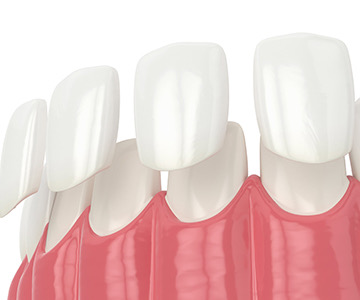Missing teeth are no longer a problem! Dental implants offer the most advanced, durable, and natural-looking solution for restoring your smile. An implant, together with its crown, mimics a real tooth both aesthetically and functionally-helping you regain confidence, comfort, and a complete smile.
To book a visit, sign up for a consultation. To clarify the details, our operator will contact you.

Why is dental implants an non-alternative treatment method for adentia?
21 March 2024
Although there are several options for filling the space left after tooth extraction, dental implants remain the most innovative solution. Dental implantation is an alternative method of treatment of adentia (toothlessness).
What is Dental Implant?
During dental implantation, an artificial root (implant) is placed in the bone, on which an artificial tooth (crown) is subsequently fixed. After the dental implants are attached to the place of the missing tooth, the difference between it and natural teeth becomes invisible to the eye.
Today, the team of "Blits Dental - Kakhaber Kharebava Clinic" would like to talk to you about the advantages that dental implants have and which make them very comfortable for the patient.
Crown attached to dental implants looks like natural teeth - One of the main advantages of dental implants is that the crowns attached to them look like natural teeth and blend harmoniously with the patient's mouth. In everyday life, when you smile and talk, given the characteristic color of dental implant crowns and the gloss close to natural tooth enamel, it is impossible to tell that they are artificial.
The dental implant crown feels like a natural tooth - the crown placed on dental implants is very similar to natural teeth, not only visually, but also in the sensations that the patient receives when using it directly, during the chewing process. Patients cannot even feel the presence of the implant in the jawbone.
Dental implants and crowns work as natural teeth - dental implants and crowns are used like natural teeth. The patient is able to speak clearly, smile widely and freely nibble on favorite foods.
Dental implants prevent the movement of other teeth - when a patient has to have a tooth extracted, the surrounding teeth are often impacted because they start to move and change position. This can lead to additional dental problems later on. Dental implants perform the same function as missing teeth, so the teeth on both sides and above it do not move out of place and remain in a healthy position. Dental implants can also help preserve your jawbone, as the surrounding bone begins to loosen after a tooth is removed. Dental implants after tooth extraction help preserve the jawbone.
Dental implants help you chew better - Missing teeth can make it harder to chew food, which in turn puts more strain on one side of the mouth. Over time, this can lead to tooth wear on the high-impact side and weakening of some of the mouth muscles. As a result, all this will give us a violation of the symmetry of the smile and create additional problems on the articulating apparatus. Dental implants allow you to comfortably chew food on both sides of your mouth and maintain muscle strength for a symmetrical smile.
Dental implants give you confidence - nothing can hurt a person's self-esteem like a bad smile. Replacing missing teeth with dental implants can significantly improve a person's daily life and give them confidence.
Dental implants are very durable - because dental implants are not made of natural tooth material, they are resistant to environmental factors. The procedure for caring for dental implants is quite simple and is very similar to the rules for caring for natural teeth, with the difference that implants do not require grinding.
Dental implants do not change color - Dental implants usually do not stain, unlike natural teeth. Because they are made of synthetic materials, they are more resistant to stain-causing foods and beverages such as red wine, coffee, blueberries, and more. Natural teeth turn yellow with age, while dental implants retain their original shade.
The procedure is mostly painless - Although dental implant placement is a form of oral surgery, the procedure is painless because it is performed using local anesthesia. The place where the implant is placed becomes completely numb and therefore the patient does not feel any discomfort.
During pregnancy, hormonal changes can cause gum inflammation, bleeding, enamel erosion, and an increased risk of cavities. That’s why visiting the dentist during pregnancy is especially important.
Gnathology is one of the leading branches of 21st-century dentistry. It forms the foundation for any complex dental treatment planning
Tooth loss (edentulism) affects not only the appearance of your smile but also the overall functional health of your oral cavity
Dental veneers can be made from various materials, but ceramic (porcelain) veneers are the most widely used.
Modern aesthetic and functional dentistry is continually evolving, striving to identify restorative materials that combine exceptional strength
The eruption of baby teeth is one of the most important stages in a child’s early development.
Modern dentistry increasingly emphasizes the importance of orthodontic care.
Oral health care begins long before the first permanent tooth erupts.
A smile is one of the key elements of a person’s visual identity. It conveys confidence and positivity. However, the beauty of a smile is not only an aesthetic factor—it is directly connected to oral health.
Orthodontic treatment has long gone beyond the limits of traditional metal braces.
Dental implantation is the best method for restoring missing teeth. However, for the procedure to be successful, the jawbone must have sufficient volume and density.
Dental implantation is one of the most effective and safest surgical procedures in modern dentistry for restoring missing teeth.
Initial endodontic (root canal) treatment is usually successful and helps preserve the natural tooth.
Root canal treatment, also known as endodontic therapy, is one of the most frequently discussed yet often misunderstood dental procedures.
Tooth decay is one of the most common dental conditions, involving damage to the hard tissues of the teeth
Modern dentistry is constantly evolving, offering improved methods for solving complex issues.
Today, there are numerous teeth whitening options—both at home and professionally done.
Modern dental clinics are equipped with special equipment that ensures the safe use of anesthesia.
















.jpeg)

.jpeg)
